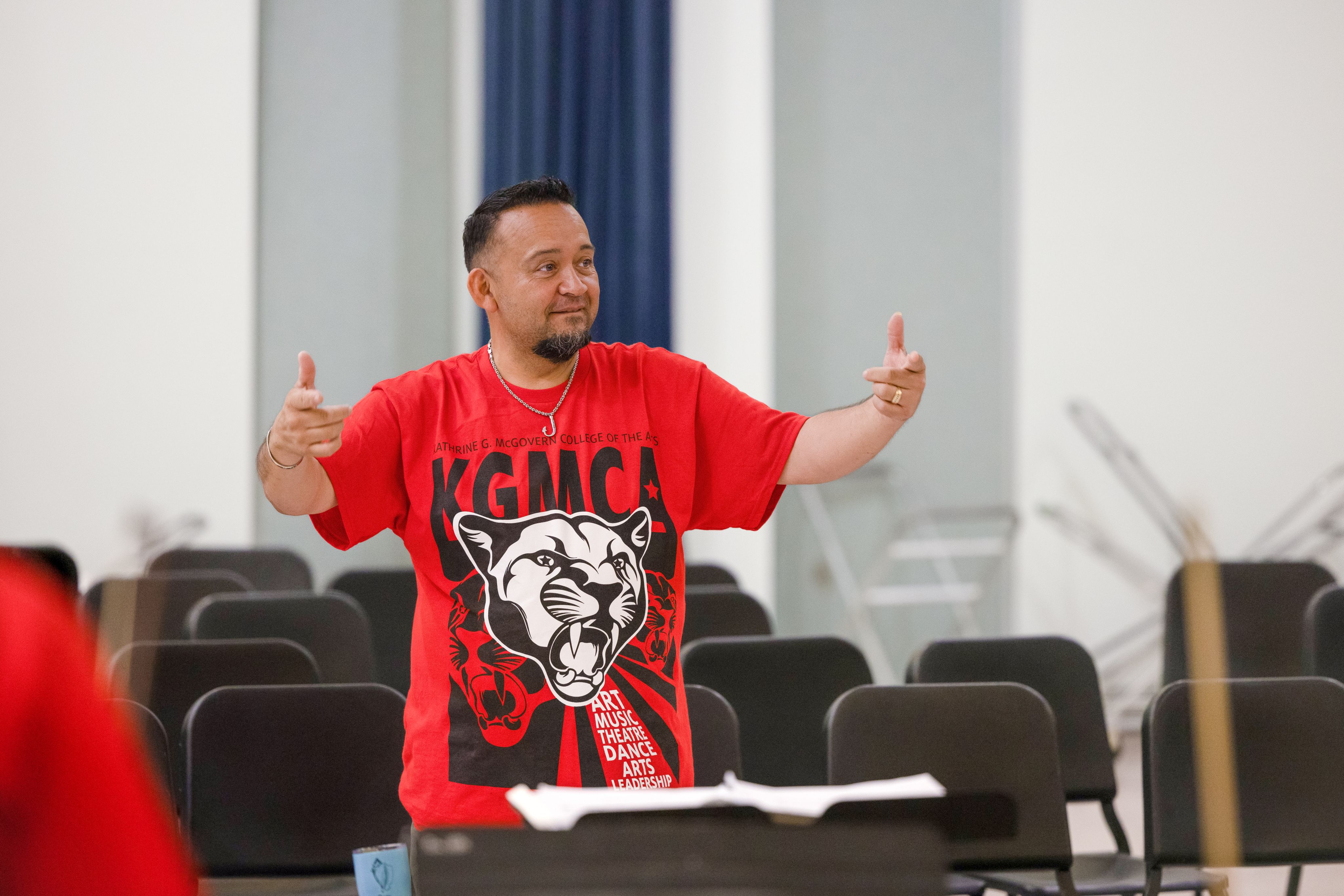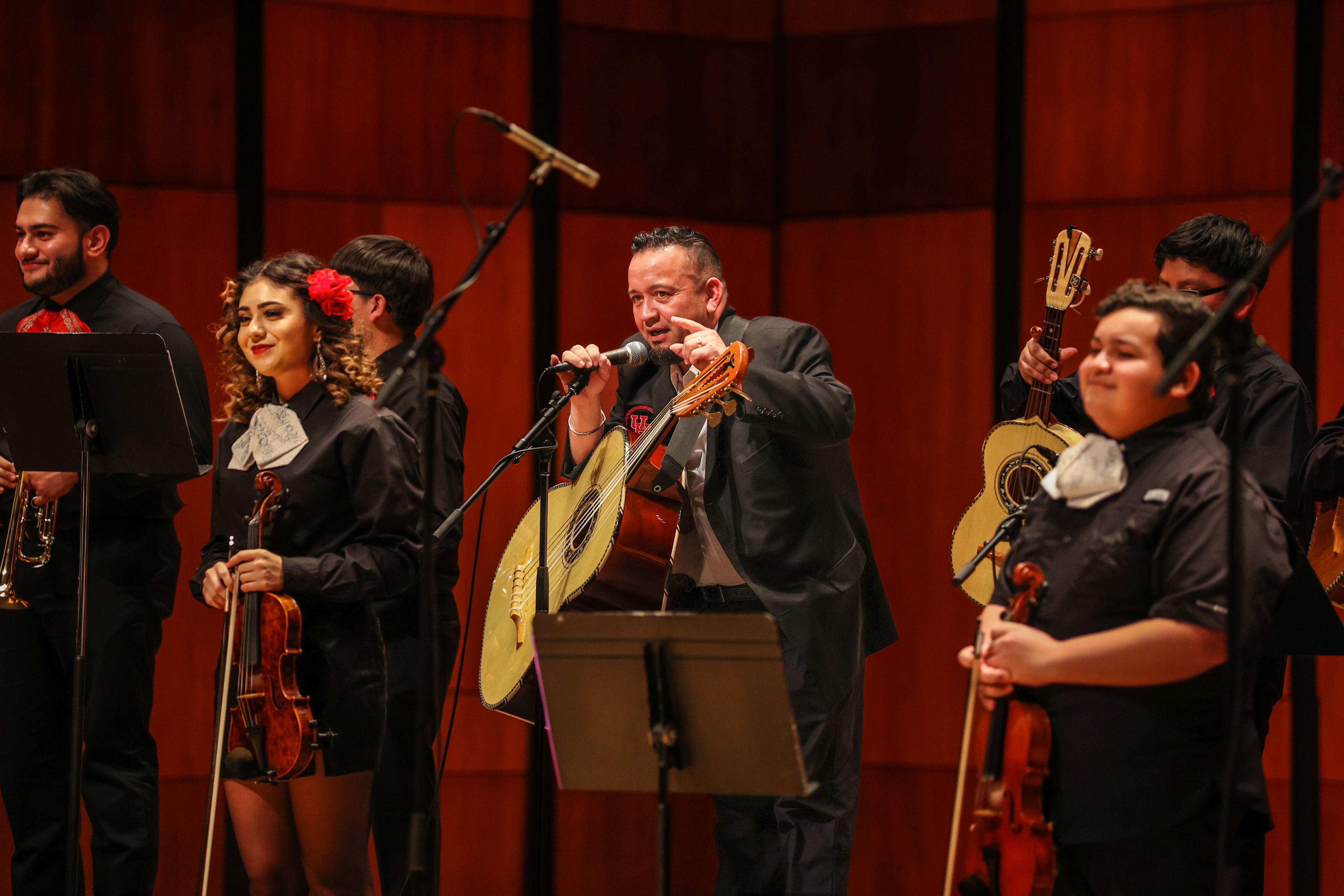FACULTY SPOTLIGHT: UH'S PIONEERING ARTS EDUCATORS
University of Houston's Kathrine G. McGovern College of the Arts welcomes three extraordinary artists in dance, guitar, and mariachi, pushing boundaries and fostering cultural unity on campus and in the community.
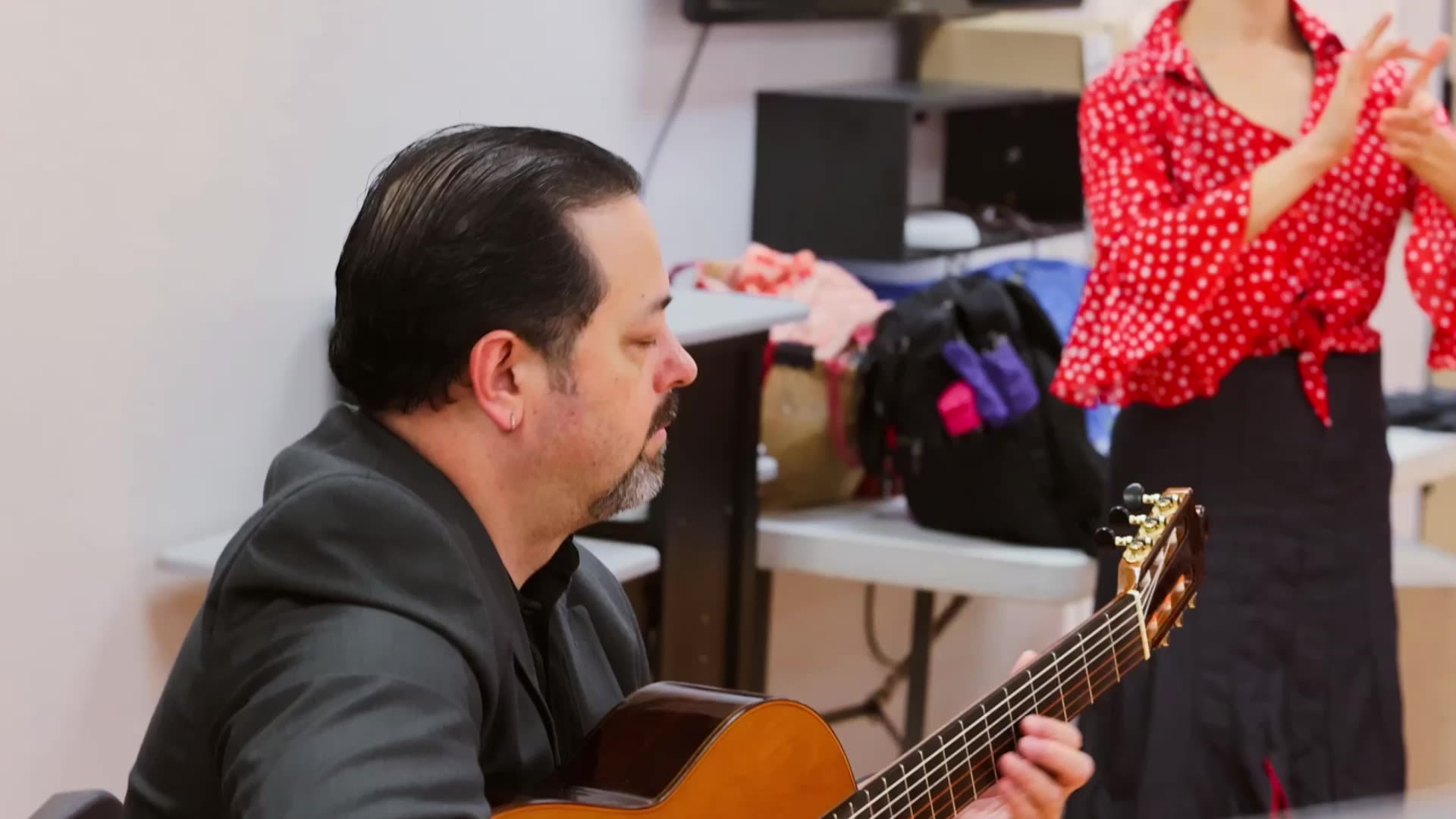
BREAKING BOUNDARIES IN DANCE AND ACADEMIA: GABRIELA ESTRADA BRINGS FLAMENCO TO UH
In the world of dance, few stories are as captivating as that of Gabriela Estrada. With a vibrant background that spans across borders and genres, Estrada’s journey through the disciplines of dance, cultural anthropology, and academia is compelling.
Estrada brought her unique perspective to the University of Houston Dance Program when she joined the faculty as an assistant professor of dance in the fall of 2022. For Estrada, joining the Dance Program represented a unique opportunity to pursue her teaching and academic interests and create work cooperatively with like minds from across the university community.
“I'm very passionate about my research on different aspects of dance. And so, when I witnessed UH’s recognition thriving as a Hispanic serving R1 institution through President Khator’s exemplary leadership, Dean Davis’ transformative vision encouraging interdisciplinary collaboration at the Kathrine G. McGovern College of the Arts, the dance department Director’s welcoming the possibility of teaching flamenco, and how I bonded with the students and faculty during my visit, I was eager to join.” Estrada said.
Born in Los Angeles, Estrada’s early exposure to dance was serendipitous. Her mother, a dance enthusiast, attended classes at a friend’s ballet studio in North Mexico when Estrada was just five years old. It was during rehearsals that Estrada stepped in to fill a dancer's shoes despite never having taken a formal dance class before, marking the beginning of her dance journey.
Estrada eventually earned a bachelor's degree in dance from the University of California, Irvine, where she joined the Spanish Dance Ensemble. Following the completion of her studies, she returned to Mexico and continued to dance, teach, joined the University of Sonora dance faculty, and founded her dance school and company. Eventually, she was encouraged to pursue a Master of Fine Arts at UC Irvine.
Upon completing her master's, Estrada embarked on a journey to earn a Ph.D., taking her to the University of Seville in Spain, the heartland of flamenco. There, she immersed herself in the culture, music, and dance, gaining a deep appreciation for flamenco's nuances.
“It was a complete life-changing experience. And as an artist, it was the best thing that has ever happened to me,” Estrada said. “It was inspiring in many ways. I fell in love with Andalusian music and architecture. Just by walking down the street, you get to appreciate art in the lanterns, the mosaic on the walls, the gardens, and the tile underneath the balconies that are right above you.”
“The Ph.D. was in flamenco interdisciplinary studies from the Department of Sociocultural Anthropology and Philology. As it was not about dancing itself, I took dance classes outside of that and a deep dive into the history of Spanish arts and culture,” Estrada said.
Estrada was the only student in the Ph.D. program from outside of Seville. Though she was familiar with flamenco, this encouraged her to approach her studies as a neophyte. “I had a lot to learn and catch up with since my colleagues in my cohort were professional flamenco singers, professional flamenco choreographers, professional flamenco guitarists,” Estrada said. This experience transformed her approach to teaching dance history and flamenco, contrasting narratives and perspectives, which she applied while collaborating with Ballet Hispánico in NYC before moving to Houston.
“I was challenged to not say that I was doing a Ph.D. in flamenco. Especially me being the only one from outside of Seville, because my colleagues in my cohort were professional flamenco singers, professional flamenco saxophonists, professional flamenco choreographers, professional flamenco guitarists,” Estrada said.
“As time passed by, I started realizing and relearning flamenco in three stages. The beginning from an outsider, the middle part of my five years—pretty much like getting an understanding and knowing what I didn't know to learn more. And then towards the end, finally having an understanding and then realizing what I really need to develop.”
Her portfolio of work and research encompasses various projects, such as the multi-disciplinary project "Ni Una Carmen Más!" (Not a Single Carmen More!) funded by UH’s Cynthia Woods Michell Center for the Arts, her MFA thesis titled, "The Choreographic Development of The Three-Cornered Hat throughout the 20th Century," and her Ph.D. dissertation exploring "Flamenco's Contributions to Ballet."
Estrada also produced and directed "ENI9MA: The Legend of Félix," a documentary highlighting the life of Félix Fernández García. This unknown flamenco dancer collaborated with luminaries such as Léonide Massine, Pablo Picasso, Manuel de Falla, and the Ballets Russes de Diaghilev in the creation of "The Three-Cornered Hat."
Estrada said her teaching philosophy revolves around inclusivity, embracing individuality, and fostering a sense of community among her students. She highlighted the importance of accountability partners, where students provide feedback and support each other's learning.
“My biggest joy is to be able to facilitate holistic learning opportunities for all, creating a sense of community, respect, and acknowledging that nobody is cookie cutter, that we are all unique individuals, that everybody has different points of value to offer and areas of opportunity to embrace and build from together,” Estrada said.
As a mentor, Estrada helps students recognize their full potential and equip them with the tools necessary to navigate a career in the arts. Specifically, she aims to help students adopt a healthy work-life balance. “Many of our students commute, help support their families, and care for elder relatives or siblings. So, we all want them to feel at home here and strategize rehearsal schedules to facilitate their work-study programs,” Estrada said, adding, “Our students are just so eager to learn. I am here to stand by their side, learn what they need, and encourage the development of their artistic potential to grow stronger and shine further.”
“The students in my flamenco class are overflowing with excitement, graced by the knowledge and charisma of global music artist Terrence Karn, guitarist Jeremy García, and singer Irma “La Paloma,” Estrada said, adding “Aside from flamenco technique and repertoire, our dancers are learning improvisation skills, a deeper understanding of music and rhythm, flamenco’s multicultural roots, and Spanish.”
In addition to teaching technique and academic courses, Estrada enjoys choreographing for the University of Houston’s opera, cultural events, and historical projects. With funding from UH faculty grants, she's currently working on reconstructing Felipe “El Loco,” choreographed in the 1950’s by American modern dance pioneer Doris Humphrey, for Mexican dancer and choreographer José Limón. Bridging networks beyond borders, esteemed artists collaborating in this project include UH music and design faculty, UH and University of Sonora alumns, NYC colleagues, and Juan Parrilla, a highly regarded flamenco composer who is recording the music in Spain.
Aside from serving as a research advisor for the National Dance Education Organization, Estrada is collaborating with UH’s global initiatives, assisting in translations, engaging with various Houston communities, collaborating with different arts organizations, and creating a network in her new city.
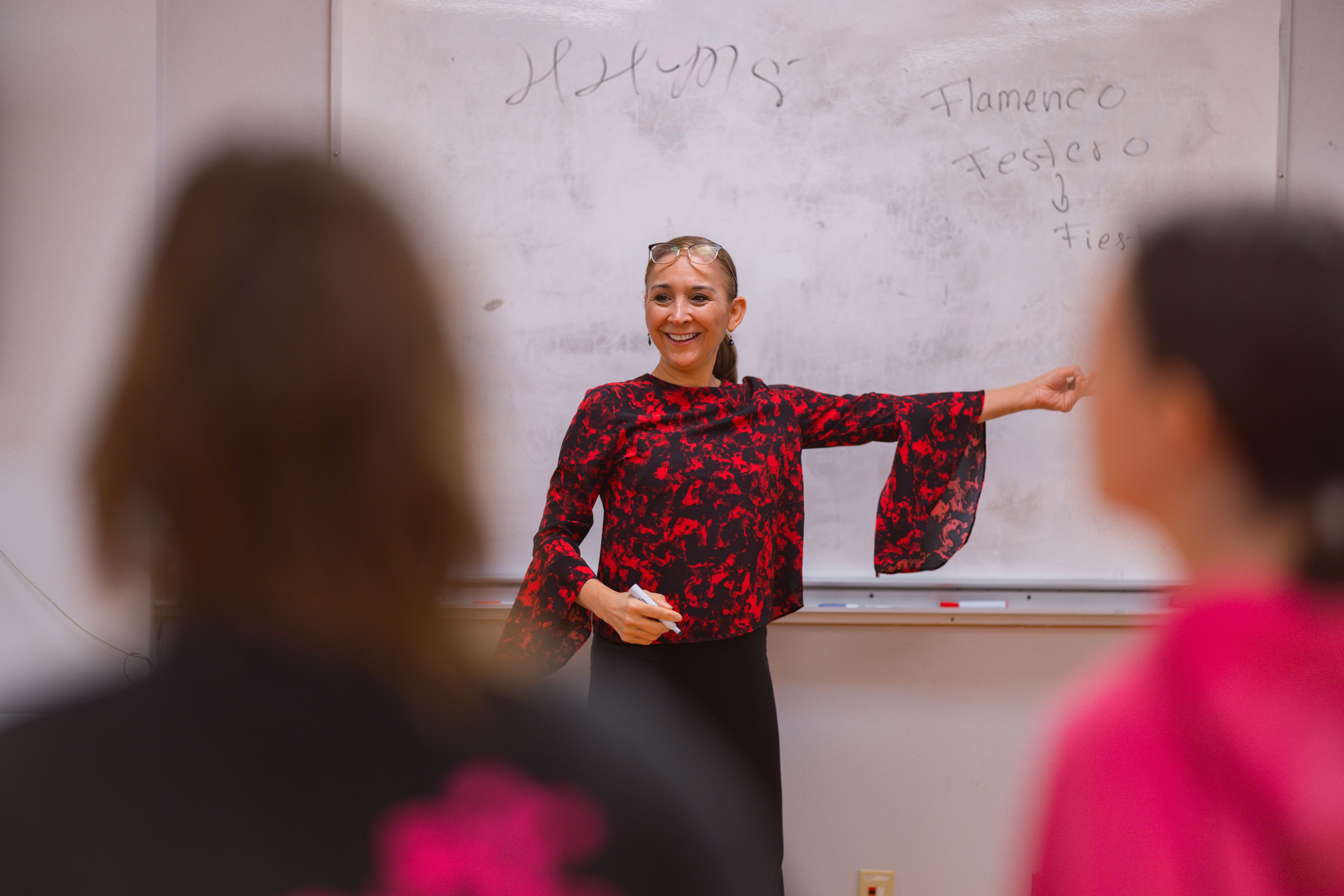
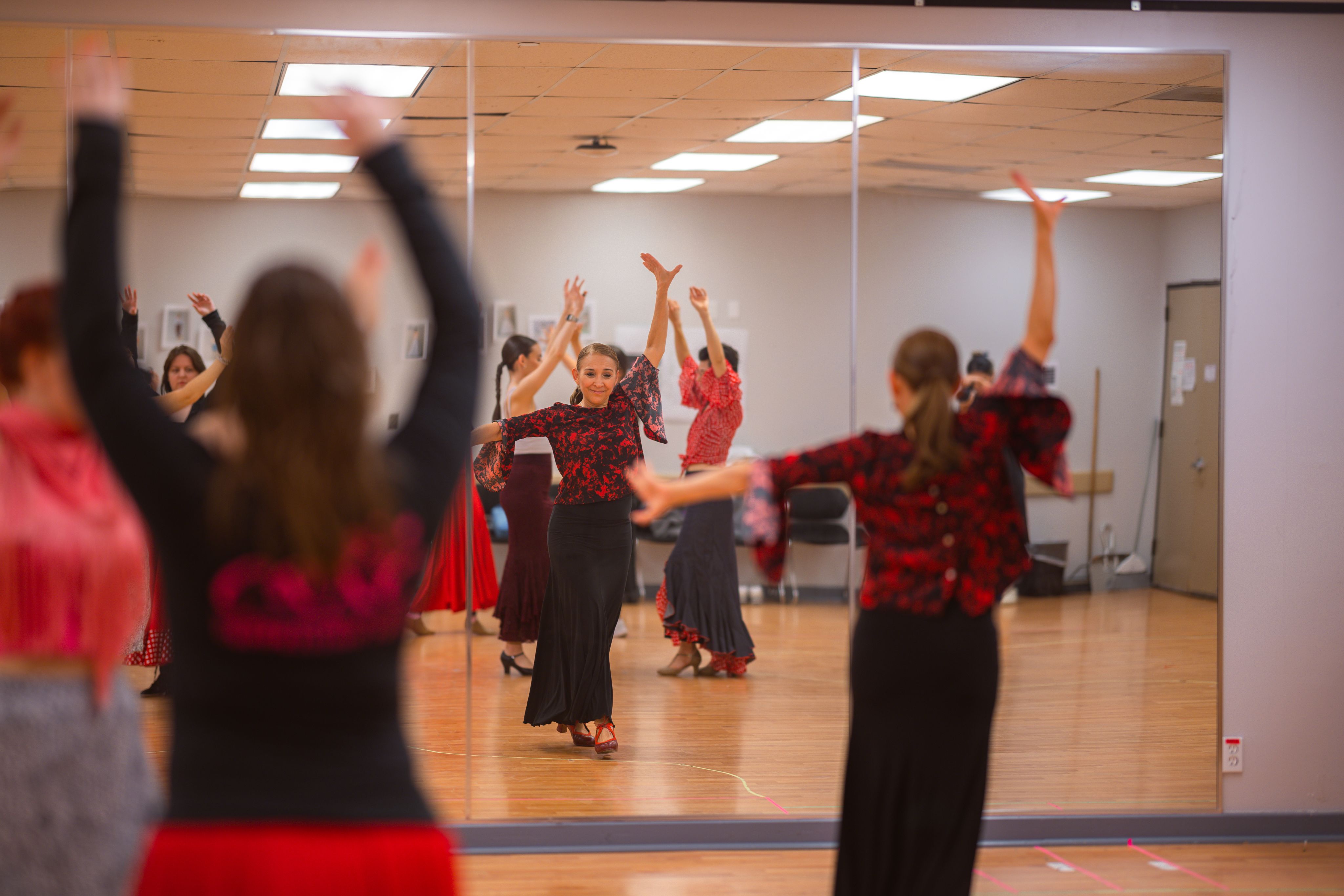
HARMONIZING TRADITIONS: JEREMY GARCIA STRIVES TO ELEVATE GUITAR EDUCATION
Like many young guitarists, Jeremy Garcia got his start playing heavy metal. But a chance encounter with classical guitar as a kid ignited his passion for a different realm of music. Now, under his guidance, a new musical endeavor is taking shape at the University of Houston.
Garcia recently took on the role of affiliate professor of guitar at the Moores School of Music. Armed with degrees in classical guitar performance from Texas A&M University-Corpus Christi and Southern Methodist University, Garcia is a seasoned classical guitarist. However, his expertise doesn't end there. As a professional flamenco performer and composer, Garcia’s prowess extends to a rich and diverse field of guitar studies.
With a background that blends the precision of classical guitar with the passion of flamenco, Garcia brings a unique perspective to the university's music program. Garcia said he views the two disciplines as complementary.
“So much of Spanish classical music is derived from the flamenco influence. It's ideal to study them both,” Garcia said. “Technique-wise, there are a lot of similarities.”
Garcia has enjoyed a successful career as a performer. He graced the stages of esteemed organizations like the Houston Grand Opera and the Helena Symphony. As a co-founder of Solero Flamenco, he embarked on numerous flamenco productions across the US. Earlier this year, he won first prize in the flamenco category of the prestigious Séptimo Concurso de Composición para Guitarra Fidelio in Madrid, Spain.
“That’s kind of unheard of for somebody born in Nebraska,” Garcia said.
Garcia said he is particularly intrigued by the distinct origins of flamenco music.
“It's a very diverse style of music. It’s roots can be traced back to the gypsies that migrated from India and Pakistan, as well as the folklore that already existed in the south of Spain. Further influences were Arabic, Sephardic, Gregorian Chant, and many more.” Garcia said. “It is definitely a strong example of multicultural cross-pollination.”
While his journey as a performer has flourished, Garcia’s commitment to education has been equally compelling. He served as the director of guitar studies at San Jacinto College for two decades, molding aspiring guitarists and leading award-winning ensembles. He also serves as the associate artistic director of the Houston Classical Guitar Festival and Competition, where he curates guest artists, conducts workshops, and mentors young talents.
Now, Garcia has set his sights on expanding the guitar program at the UH. His vision is to create a multifaceted program that emphasizes the classical guitar while embracing flamenco, jazz, and more. He is interested in creating a program that encourages classical guitar students to explore diverse musical styles, collaborate with fellow musicians, and engage with the community through outreach programs.
“What differentiates this program from others will be the emphasis on cross-disciplinary collaborations - which is designed to make performers more well-rounded and successful,” Garcia said. “Our emphasis will focus on classical guitar ensembles and guitar solo work; however, I would like to see our students explore the accompaniment side of the discipline. There is a wealth of knowledge that can be gained accompanying singers, dancers, and other instrumentalists. The University of Houston now holds flamenco dance classes here with Dr. Gabriela Estrada and this is a resource from which we should all benefit.”
“Community outreach is another important aspect of our mission. I envision our students engaging with local public schools that have limited resources to provide artistic programming for young students,” Garcia said.
Though he only recently joined the faculty, Garcia has already begun to make his impact on campus. He accompanies Dr. Estrada’s flamenco class on Thursdays and he recently launched a series of free guitar workshops on Mondays open to guitarists of all backgrounds and skill levels.
“I thought this would be a great way to open the door and get people talking more about the guitar on campus,” Garcia said.
“Whether they're music majors or non-music majors, we will be learning skills and techniques that will facilitate artistic growth. If they've never played before, they're going to pick up some things pretty quickly.”
As Garcia steps into this new role, he said he seeks to instill in students not only technical excellence, but also a deep appreciation for the cultural and historical nuances that shape guitar music. He said he wants graduates who are not just skilled performers, but also passionate educators and community builders, ready to share their love for the guitar with the world.
“Student success is the center of what we do. Students will be earning degrees in guitar performance, education, or music therapy, and becoming effective members—contributing members—of the community. Whether it’s in the public school system, higher education, or as competition winners, student success is the goal.”
“I am honored to join the faculty of MSM to establish a strong classical guitar program enhanced by flamenco studies that is in-keeping with the highest standards of excellence set forth by this institution. It will be wonderful to see the halls filled with dedicated guitar students who are passionate about learning and sharing their knowledge with the next generation.”
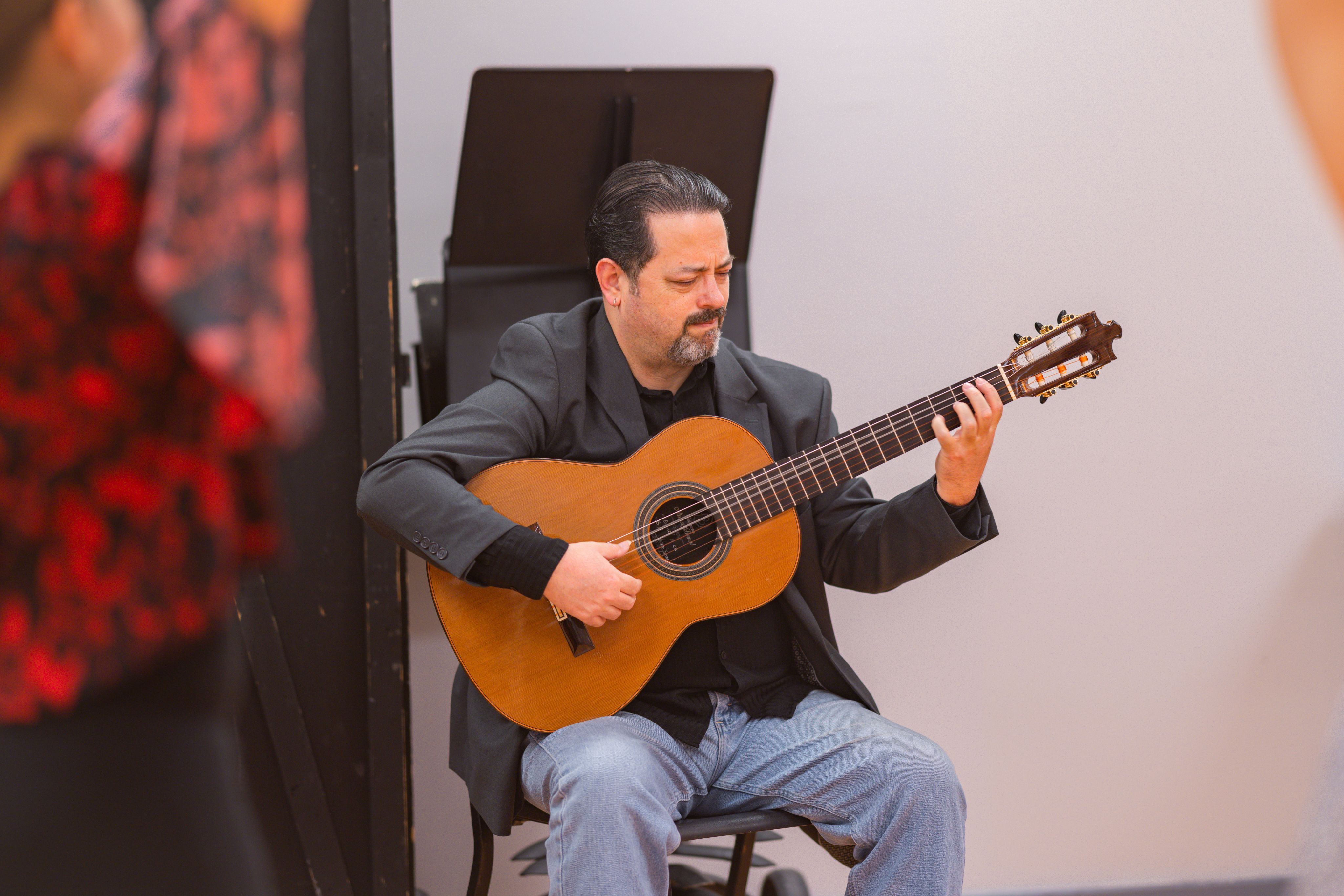
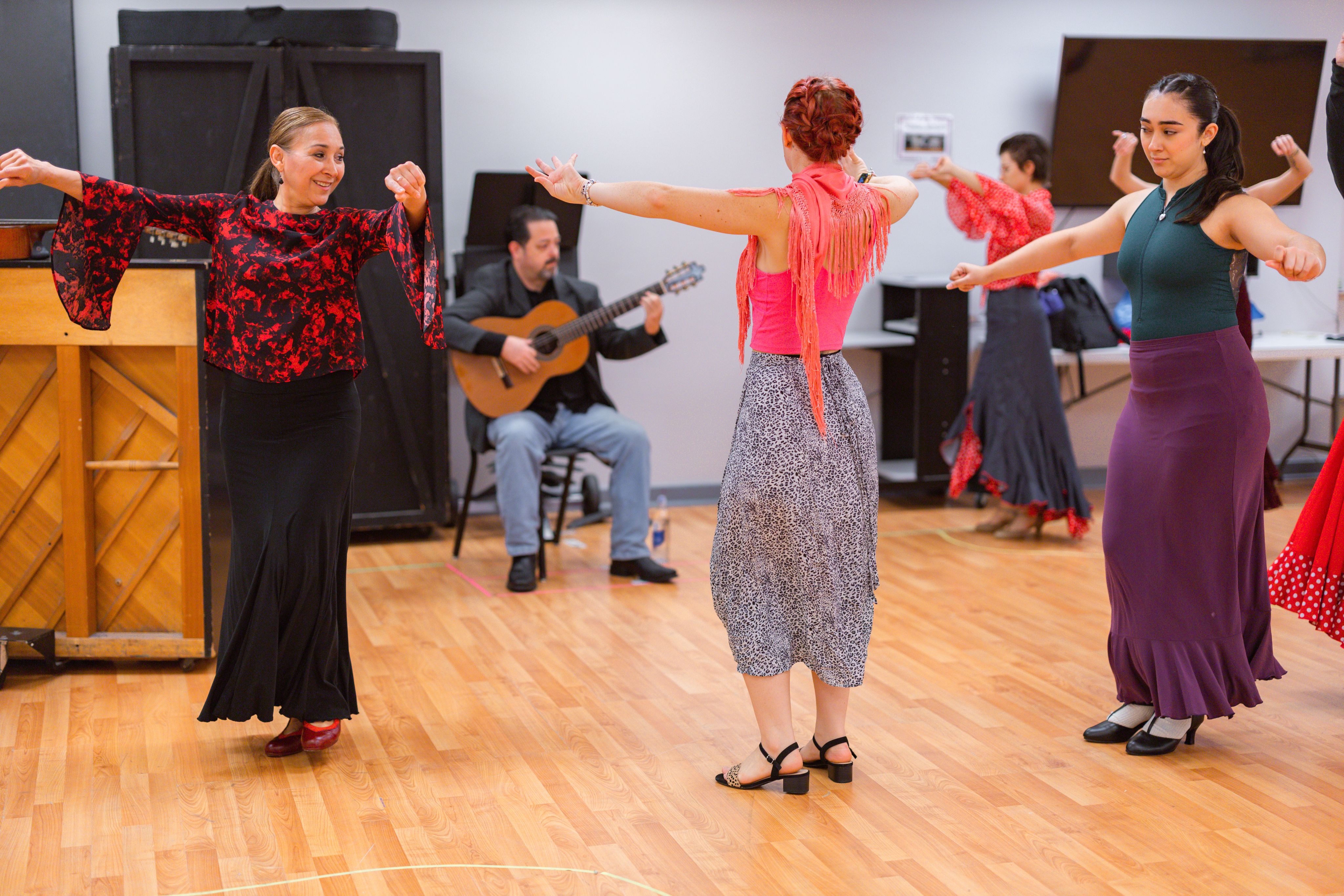
A MARIACHI MISSION: JOSÉ LONGORIA IS BRIDGING CULTURES AT UH
In the heart of Houston, where cultures blend seamlessly, Jose Longoria, director of the Mariachi Pumas at the University of Houston, is on a mission to preserve mariachi music while fostering cultural unity.
Born and raised in Houston, Longoria, a third-generation mariachi, began his musical journey at age seven, following in the footsteps of his father, Adrian Longoria. Adrian, a skilled mariachi, founded Mariachi Imperial in the 1980s. This group achieved international acclaim, performing across the globe and transcending language barriers through music.
Longoria's dream of becoming a music teacher led him to earn a bachelor's degree in education from the University of Houston-Downtown. Initially, he started his career as a mathematics teacher at Patrick Henry Middle School. Soon, his mariachi expertise came to light, and he initiated the first-ever mariachi program at the school. Enrollment soared as students embraced mariachi music, and collaborations with Sam Houston High School followed. Soon, Longoria brought his experience as a mariachi educator and advocate to the collegiate level.
The Mariachi Pumas at the UH owe their existence to Dean Andrew Davis of the Katherine G. McGovern College of the Arts and former University of Houston Regent Paula Mendoza. His invitation for Longoria to become the Director of the Mariachi Pumas was a dream come true. Under Longoria's leadership, the mariachi group has become a cherished part of the university's cultural tapestry.
“It's such a pleasure and it's such a blessing to have the support of the Katherine McGovern College,” Longoria said. “Through Dean Davis' leadership, we're actually the first university in Houston ever to have an official mariachi program.”
A recent highlight for the Mariachi Pumas was the receipt of a generous grant from HEB. This grant significantly bolstered the UH Mariachi Summer Camp, welcoming students from various age groups, from elementary to college. This year, the camp hosted 110 enthusiastic participants, showcasing its remarkable growth and impact.
“Last year we had 80 students. This year we had 110, so it's growing,” Longoria said. “We were able to get the necessary teachers to run this really big summer camp, so we're very thankful for their support.”
Longoria's vision for the future is clear: he aims to prepare students to become mariachi educators. He envisions creating a foundation of professionals well-versed in mariachi music, ready to meet the growing demand for mariachi educators in Houston and Texas at large. His ultimate goal is to establish the Mariachi Pumas as a beacon of mariachi education, not only at UH, but throughout the region.
It's a unique setting where the majority of our students in mariachi are non-music majors. We have students that are optometrists, or in construction management, psychology, education, government. Everything that has nothing to do with a music major, but they're still performing. These are students that chose to select a different career pathway, but they still want that music in their lives,” Longoria said.
“We want to share that experience through mariachi with those people that want to continue. But at the same time, we also want to recruit students that really want to do mariachi as a performance in the future.”
“For them to say, ‘Hey, I want to go to the University of Houston because of the mariachi.’ That's our goal. But nonetheless, we always want to make sure that the mariachi is there for everybody.”
